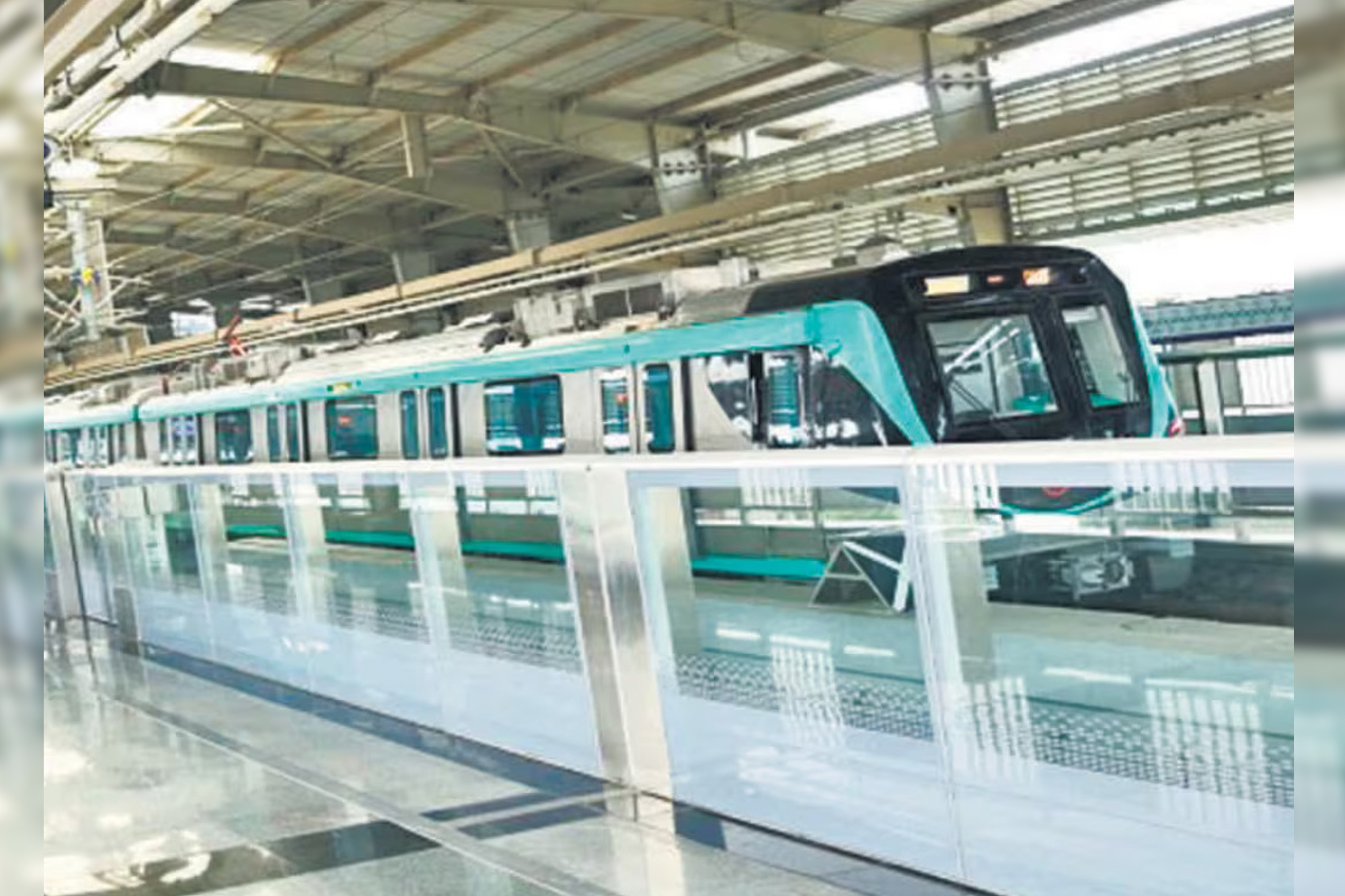Atal Setu: Transformative infrastructure for India’s progress
By Edit Team | January 12, 2024 6:25 pm SHARE

In a landmark moment for India’s infrastructure, Prime Minister Narendra Modi inaugurated the Atal Bihari Vajpayee Sewri-Nhava Sheva Atal Setu, formerly known as the Mumbai Transharbour Link (MTHL), on December 12.
He was accompanied by Maharashtra Chief Minister Eknath Shinde and Deputy Chief Ministers Devendra Fadnavis and Ajit Pawar – during the inauguration ceremony.
Chief Minister Eknath Shinde underscored the project’s importance, emphasising that the Mumbai Trans Harbour Link (MTHL) will catalyse development in Navi Mumbai and its environs. The 22-kilometer-long MTHL will link South Mumbai to the new Navi Mumbai airport and the Mumbai-Pune Expressway, thereby improving connectivity and cutting down travel time.
This 21.8-km long engineering marvel, constructed at a staggering cost of ₹17,840 crore, stands not only as the longest bridge in the nation but also as the longest sea bridge, reflecting a strategic leap in India’s infrastructure development.
A vision for ease of mobility
Prime Minister Narendra Modi’s vision to enhance the ‘ease of mobility’ for citizens by fortifying urban transport infrastructure and connectivity has materialised in the form of Atal Setu. Laid as the foundation stone by the Prime Minister in December 2016, this project is emblematic of a transformative phase in India’s infrastructure landscape.
Engineering marvel
Atal Setu, spanning 16.5 km over the sea and 5.5 km on land, is a testament to engineering excellence. The steel used in its construction surpasses iconic structures like the Eiffel Tower, while the concrete employed exceeds the Statue of Liberty. This engineering marvel, constructed under the guidance of the Mumbai Metropolitan Region Development Authority (MMRDA) on an Engineering Procurement Contract (EPC) basis, is set to usher in a new era of connectivity and accessibility.
The project saw the involvement of leading construction firms, with GR Infraprojects (GRIL) and Gawar Constructions bidding for the operations and maintenance (O&M) contract. The appointed contractor will play a pivotal role in maintaining the bridge’s civil structure and overseeing the operations of its Advanced Traffic Management System (ATMS).
The bidding process underscores the industry’s commitment to delivering quality infrastructure, emphasising the importance of selecting a partner with the capability to ensure the bridge’s longevity and optimal functionality.
Financial landscape
Atal Setu’s financial landscape is equally noteworthy. Constructed at a cost exceeding ₹17,840 crore, including a substantial loan from the Japan International Cooperation Agency, this project is a testament to collaborative efforts in fostering international partnerships for India’s infrastructural growth. The financial aspects highlight the government’s commitment to investing in transformative projects that propel economic development.
Reducing travel time and fuel costs
One of Atal Setu’s primary objectives is to reduce travel time and fuel costs significantly. Connecting Sewri in Mumbai to Chirle in Navi Mumbai, the bridge is set to cut travel time between the two points from two hours to a mere 15 to 20 minutes. This reduction is not only a boon for commuters but also translates into substantial fuel cost savings, estimated at around ₹500 per journey. Such efficiency aligns with the government’s broader vision for sustainable and cost-effective transportation solutions.
“Beyond simply reducing travel time, the bridge enhances our quality of life through the integration of modern and advanced technology. Environmental sustainability, longevity, security, and progress are among the fundamental purposes of this engineering marvel,” the MMRDA said.
Impact on real estate and regional development
Beyond its immediate infrastructural benefits, Atal Setu is poised to be a game-changer for the real estate sector. The bridge’s inauguration is expected to appreciate property prices and catalyse significant real estate growth, particularly in areas like Panvel and Ulwe. Developers foresee a surge in demand for homes, driven by professionals seeking affordable luxury close to prime business hubs.
Chembur, already a beneficiary of key infrastructural projects, is anticipated to witness further transformation with the swift and hassle-free connectivity provided by Atal Setu. The bridge is set to democratise the real estate market, connecting regions that were once considered less desirable, ultimately becoming major nerve centers of Mumbai’s real estate landscape.
Cohesive development
Atal Setu is not an isolated project but part of a broader, cohesive development strategy. The ongoing construction of a 337 km metro network, operational segments, and plans for additional expansions in 2023-2024 solidify Mumbai’s status as a vibrant real estate hub. This integrated approach is expected to positively impact property prices and drive significant real estate growth, reshaping the city’s urban landscape.
From its inception, the Atal Bihari Vajpayee Sewri-Nhava Sheva Atal Setu project has navigated the complexities of procurement, finance, and engineering, showcasing a commitment to delivering transformative infrastructure.
As we stand on the brink of the bridge’s inauguration, it symbolises more than just a physical connection between two points; it marks a symbolic link between visionary leadership, strategic procurement, and sustainable development. Atal Setu is not merely a bridge but a catalyst for a brighter, more connected, and economically vibrant India, setting the stage for future infrastructure endeavors that will shape the nation’s landscape.
Cookie Consent
We use cookies to personalize your experience. By continuing to visit this website you agree to our Terms & Conditions, Privacy Policy and Cookie Policy.




































-20240213125207.png)

























